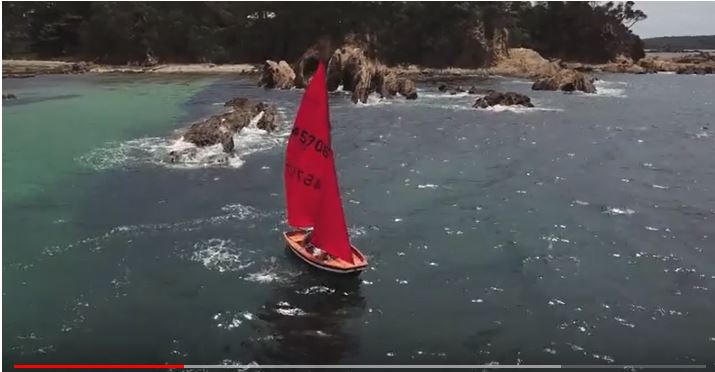This post constitutes a refresher session on classic sails and rig configuration, there’s plenty of pictures and videos further on, but first an extract from a book called The Sailmaker’s Apprentice to set the tone: –
SEE HOW SHE SCHOONS! Cutting a feather in
a four-lower breeze, sails filling in powerful
curves and pulling like the muscles of a draft horse
with a heavy load; sails straining under the relent-
less force of the wind! By moonrise, the wind’s diminished to a
whisper—hardly a ripple on the water as she
ghosts slowly along under light sails; great cloth
phantoms tranquilly billowing in the moonlight.
Or in an oily calm, the limp cloth slats and slams
from side to side, awaiting the day when it might
explode from its boltropes under the force of a
howling gale and be lashed and beaten to useless
shreds. Harmony and discord in the marriage of
wind, wave, wood, and cloth.
A few weeks ago, on Saturday afternoon a group of Wardley’s sailors were sat happily in the lounge area of the club house talking boats as usual. The conversation turned to sails and rig configuration. We started to talk about gaffs and gunters, and lugsails, topsails, skyscrapers, real canvas, and the days before the utilitarian convenience of plastic sails and aluminium masts. It was a lovely conversation that went on for some time while outside the light faded as the tide slowly ebbed from the creek, and the only thing missing was a nice glass of whisky in hand. We’ve got to admit though, although we all roughly knew what we were talking about — we certainly all had wonderfully romantic images of brightly varnished spars hauling red coloured cotton sails high aloft, ropes smelling of tar leading down to banks of belaying pins and the like — it would be fair to say that we DIDN’T really know our gunters, from our dipping lugs!
Having just recently swotted up on the matter, I thought to try and address these evidently grey areas.
You’ll get refresher on: –
1. Square Rig
2. The Dipping Lug Rig
3. Balanced Lug Rig
4. Standing Lug
5. The Gunter Rig
Ok, let’s go.
1. Square Rig
An ancient sail and most effective on big ocean going sailing ships. Mast stepped centrally. A wooden ‘Yard’ up top. Sail cut square. No boom down below (loose footed). Equal sail for and aft of mast. Powerful on broad reach and off the wind, jibing not a worry. The square Rig. Can be a bugger to tack. (see the video)
As said above, square riggers are a bugger to tack, take a look at the Star of India trying. As you will see its not a walk in the park. Built in Ramsay IoM back in 1853. Now thousands of miles away based in San Diego (USA). The oldest working square rigger on the planet.
2. The Dipping Lug Rig
A variation of the square rig. A very powerful and effective arrangement on all points of sail. The best up wind of all the Lugsails. A bugger to tack though, having to drop the sail and re-hoist on new tack. With a central mast, a long gaff up top, and a loose footed below. The sail’s tack fix-sheeted well forward of mast. Can have a split configuration on the same gaff see the second boat in the image.
2. The Balanced Lug
Mast forward of centre plate, Gaff hoisted up top and pulled close to mast, and peaked high abaft. Sail laced on boom at bottom (can just be held at the tack and clew). Boom tied down by tack down haul to foot of mast. Sail cut out-of-square to accommodate the peak-gaff. Sail laced to gaff. (Junk rig is a fully battened variation.)
Two cracking little balanced lug tender dinghies. They’re probably more fun than their mother ships.
4. Standing Lug
Mast up forward of centre plate. High peaked gaff hoisted up mast. Loose footed, or a boom, at foot. Sail laced on gaff. Tack retained at foot of mast. The ‘Drascombe Dabber’ is an example with a loose footed main sail.
5. The Gunter Rig
This is the most common one you will see. The gaff is held to the mast by jaws at the bottom, and by the halyard keeping it almost vertical at the top. At the bottom of the mast can have a boom or it can be loose footed.
Now, the ultimate gunter sailing dinghy of all time must be the Mirror Dinghy. I learnt to sail in one and I’m certainly not the only one to have done so.
I hope you enjoyed this post. Over the coming week I’ll try to extend this post to include the more modern arrangements commonly use by Wardley’s sailors.

